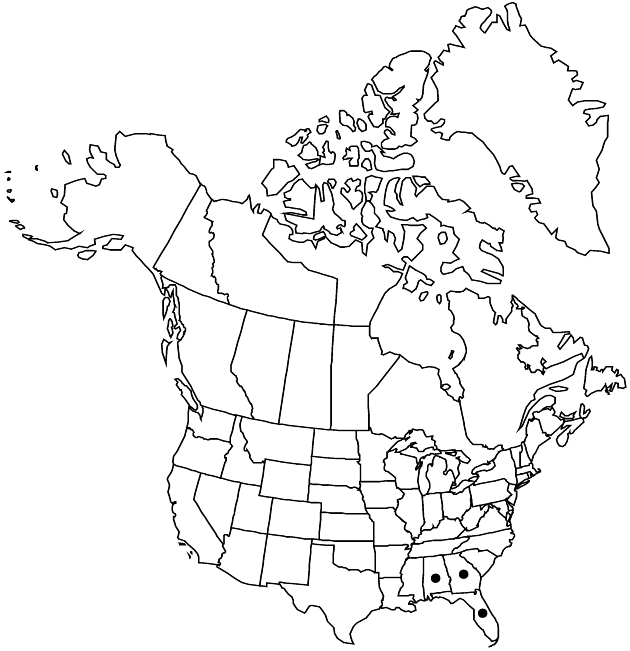Liatris chapmanii
Fl. N. Amer. 2: 502. 1843.
Plants 35–75(–150) cm. Corms globose to elongate. Stems hirtellous. Leaves: basal and proximal cauline 1-nerved, spatulate-oblanceolate to narrowly oblanceolate, 40–150(–180) × 4–8(–11) mm, abruptly reduced (linear, 1–2 mm wide), then gradually reduced distally, essentially glabrous or hirtellous (sometimes mostly along abaxial midveins), gland-dotted. Heads (appressed, overlapping) in dense, spiciform arrays. Peduncles 0. Involucres cylindric, 8–12 × 3.5–5 mm. Phyllaries in 3(–4) series, oblong to oblong-lanceolate, unequal, usually glabrous, rarely minutely puberulent, margins with hyaline borders, apices acute to acuminate. Florets 3–4; corolla tubes glabrous inside. Cypselae (3–)4–6 mm; pappi: lengths ± equaling corollas, bristles barbellate. 2n = 20.
Phenology: Flowering Aug–Oct.
Habitat: Dunes, beach strands, sand ridges, fields, roadsides, longleaf pine savannas, longleaf pine-turkey oak, turkey oak, evergreen oak-sand pine-scrub, scrub with Ceratiola and Pinus clausa
Elevation: 0–50 m
Distribution

Ala., Fla., Ga.
Discussion
Selected References
None.